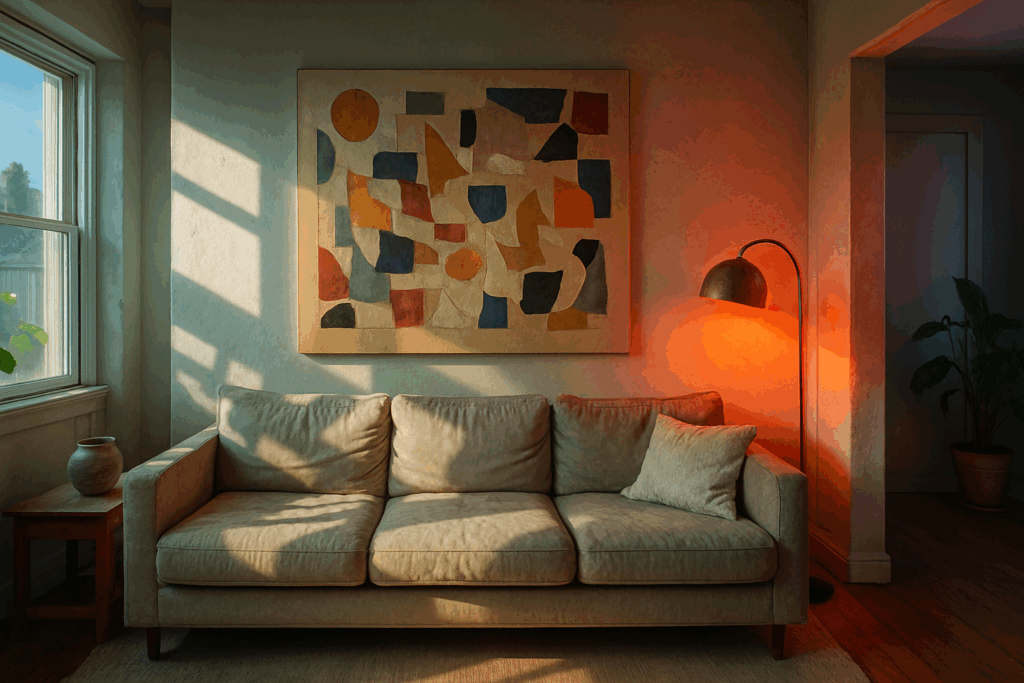The Creative Edge of Combining Materials
There’s a raw power in mixing materials—camera footage with screen captures, vlogs laced with text overlays, animation tucked between talking headshots. Creators in 2024 are leaning hard into this layered style, not for flash but for storytelling punch. It’s not about having the best gear; it’s about using what you’ve got with intent.
Accessibility is the real win here. Most creators already have more tools than they realize—your phone, a laptop, some stock footage, an app or two. Layer in what you want: bits of audio narration, a sketched-out map, first-person voice slips from a phone recorder. Done right, it feels effortless, but it keeps viewers locked in.
Whether you’re just getting started or you’ve been vlogging for years, this trend meets you where you are. You don’t need a studio setup. You just need vision and a bit of grit. Creativity, now more than ever, is about combining everyday pieces into something that feels personal and watchable.
Start with your base. Newspaper clippings, old magazine pages, product labels—anything with texture or type—work well. Tear them, overlap them, mix in language and color. Glue it all down with matte gel or mod podge (no shame in the basics).
Once dry, it’s time to paint. Go bold or go sheer—acrylics give you the option. A saturated red. A smoky wash of blue. Let the headlines peek through if that’s your thing. Or blast it out completely with a solid field of white, then build back up.
Want texture that pops? Molding paste adds dimension. Don’t have any? Raid the kitchen. Crumpled foil, cardboard ridges, dried rice—layer them under or over your paint for some grip. Texture doesn’t need to be fancy. It just needs contrast.
For finishing touches, think cohesion. A final glaze can tie it all together. Add line work or a bold word in permanent marker. Seal it up with a topcoat so it doesn’t peel or flake later. Done right, it looks like chaos made intentional.
Layering Techniques That Make Visuals Pop
Creating artwork that captures attention often starts with strong layering techniques. In this section, we’ll explore how to combine watercolor, ink, and fine detailing to produce dynamic, high-impact visuals.
Build Your Base: Fluid Watercolor Wash
Start by laying down a fluid watercolor background. This base sets the tone and mood of your piece.
- Use plenty of water for a dreamy, organic effect
- Blend colors while wet for smooth transitions
- Allow drying time before adding layers to avoid muddiness
Bold Black Ink: Adding Structure and Drama
Once your wash is dry, introduce lines, shapes, or figures in bold black ink. The contrast of rich black against delicate watercolor can create striking visual moments.
- Try abstract doodles, minimal figures, or expressive line work
- Use brushes for dynamic strokes or pens for precision
- Avoid over-detailing—leave space for the background to breathe
Contrast is Key: Create Visual Energy
Play with opposing elements to establish movement and depth. Think soft vs. sharp, light vs. dark, and fluid vs. structured.
- Don’t be afraid to overlap ink over light areas to draw the eye
- Use negative space intentionally to break up visual density
Optional Finish: Metallic Highlights
Add subtle shimmer with metallic pens, gel markers, or fine liners. These accents help guide the viewer’s gaze and introduce a tactile element to your work.
- Focus on edges, outlines, or focal points
- Gold, silver, or copper tones work well with cool or warm palettes
- Use sparingly for best effect—less is often more
By layering with purpose and playing with contrast, you can create visually rich pieces that feel both spontaneous and well composed.
Taking a vintage or sentimental photo and giving it new life on canvas or wood isn’t just creative—it’s personal. To start, pick a sturdy base. Wood adds texture and grit; canvas keeps it lighter. Print your photo on regular paper with a laser printer. (Inkjet doesn’t transfer as cleanly.)
Use a gel medium—matte or gloss, your choice. Spread a thin, even layer on the surface, then press the printed image face-down. Smooth it firmly to remove bubbles. Let it dry completely—no shortcuts. Then, with a damp cloth or sponge, rub the paper away gently. The image stays behind. It’s like magic, but messier.
Now the fun part: add small found objects around your photo. Old keys, vintage buttons, ticket stubs, even torn labels. Keep the layout balanced, but don’t overthink it. You want it to feel organic, not crowded.
To seal it, brush on a clear, matte acrylic sealer or Mod Podge. This protects the image and the attached items while giving it a finished feel. Done right, it’s durable—and tells a story that lasts.
Got some old jeans, a stretched-out T-shirt, or maybe a lacy curtain that’s seen better days? Good. That’s your blank canvas. Scrap fabric is cheap, personal, and surprisingly sturdy—the perfect base for creating something that hits harder than a store-bought print.
Start by laying your fabric flat and picking a concept. Think big, bold patterns or a phrase that means something to you. Use stencils if you want clean lines, or freehand if you’re going for grit. Spray paint gives you fast coverage. Fabric markers add detail. Sponge brushes land somewhere in the middle.
When it’s dry, step back and see how it feels. Not everything needs a frame—hanging it with clips on a dowel or sewing the edges into a clean fold can work just as well. If you’re mounting it proper, stretch the fabric over canvas or cardboard and staple it down tight. You’re not just making DIY art. You’re building texture, story, and a space that’s yours.
Create a Visual Journal Page or Spreads
Start with a blank page. It doesn’t have to be fancy—use a sketchbook, an old notebook, or even loose paper. The goal isn’t perfection. It’s presence. Paper scraps go down first—ticket stubs, used envelopes, receipts—anything that tells a slice of your day. Add handwriting. A single sentence is enough. Don’t overthink it.
Draw something small: a coffee mug, the view outside your window, your shoes. Use pigment—watercolor, ink, pastel—whatever moves fast and doesn’t stall you with choices. Let texture drive the mood. The rougher, the better.
The trick is to make it a daily habit. Five minutes. Ten, max. It becomes part therapy, part logbook, part creative recharge. You’ll start noticing moments you used to miss. Patterns in your thinking. Color in things you thought were grey.
When pages start stacking up, make space for them. Old shoeboxes, binder clips, DIY wall grids. Display what speaks loudest. Tuck away what feels fragile. The point is to keep moving, keep making. This isn’t about gallery walls. It’s about showing up.
Sticking It Together: Building Cohesive, Archival Vlogs Without the Fuss
There are no strict rules in the vlogging world—just a handful of solid practices that keep your content clear, connected, and lasting. Cohesion matters. That doesn’t mean every episode needs the same aesthetic or format, but your tone, message, and personality should match across your work. Viewers come for reliability as much as entertainment.
Next up: tools of the trade. For editing, think of transitions and pacing as your adhesives. Jump cuts are fine (they’re everywhere), but overdo them and you lose flow. Clean audio is another glue that holds things together—invest in a mic before another lens. Editing software like Final Cut Pro and DaVinci Resolve gives you control, but even native tools in apps like CapCut or Adobe Rush can do the job when used intentionally.
Want to keep your content from breaking down over time? Archive your footage in multiple places—don’t trust a single hard drive. Export high-bit-rate masters and back up your raw files. Cloud storage helps, but don’t depend on free plans alone; long-term creators invest in proper backups.
And don’t let gear prices scare you. Some vloggers shoot compelling episodes with hand-me-down phones and thrifted rigs. Reuse lighting setups, hack together tripods, cut intros with older footage you already have. Creativity doesn’t need a credit card—just some clever problem-solving.
Take your mixed media practice to the streets
It’s one thing to create art from your studio or bedroom. It’s another to bring it out into the world—raw, public, alive. Mixed media artists are stepping outside more in 2024, transforming alley walls, community boards, and abandoned storefronts into layered statements. This isn’t about showing off; it’s about meeting people where they are.
Street-level work strips away the filters. There’s no edit button, no algorithm deciding who sees it. You’re crafting with openness—and that earns attention. More artists are also organizing collaborative mural projects, using texture, collage, and recycled elements to build something bigger than any one person. It’s art as common ground.
If you’re ready to take that step, check out this guide: How to Organize a Collaborative Mural in Your Community. Because making something for others, with others, just might make your work matter more.
Mixed Media Is About Experimentation—Not Perfection
The idea behind mixed media in vlogging isn’t to get everything right on your first go. It’s to try. Pull in voiceover. Layer in B-roll. Throw in text, graphics, old footage, lo-fi audio. Mix formats—vertical, square, widescreen. If something doesn’t land, scrap it. Paint over it. Try again tomorrow.
There’s no set formula that works for everyone. Some creators shoot everything on phones and cut in silent-film style title cards. Others use AI-generated art next to self-shot raw clips. The ones winning? They’re not aiming for polished. They’re aiming for honest—or at least interesting.
So start. Start messy, start weird. Your style will define itself over time. Perfection can wait.

 Johner Hazardics brought essential structural and technical support to FLP Emblemable, assisting in the development of its layout, functionality, and user-focused features. His dedication to smooth performance and intuitive design helped the platform grow into a reliable and engaging space for artists and enthusiasts alike.
Johner Hazardics brought essential structural and technical support to FLP Emblemable, assisting in the development of its layout, functionality, and user-focused features. His dedication to smooth performance and intuitive design helped the platform grow into a reliable and engaging space for artists and enthusiasts alike.